Claims and Counter Claims Fly as “Gaza Solidarity Encampment” Gets Crushed at NYU
Over 100 pro-Palestine protestors that included New York University students and faculty members were arrested by the NYPD in riot gear on April 22. In response to the protests, NYU administration has built “a wooden wall” around the protest site, which further angered the pro-Palestine protestors.
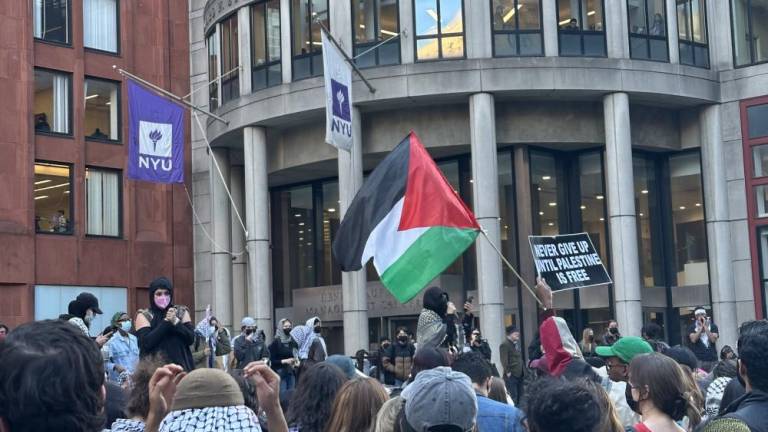
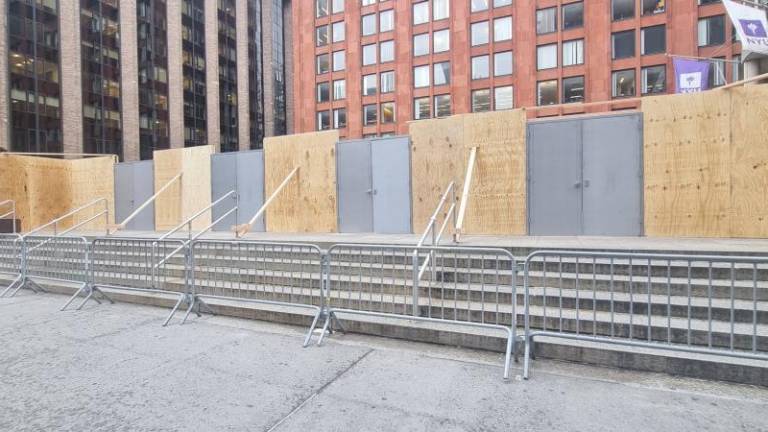
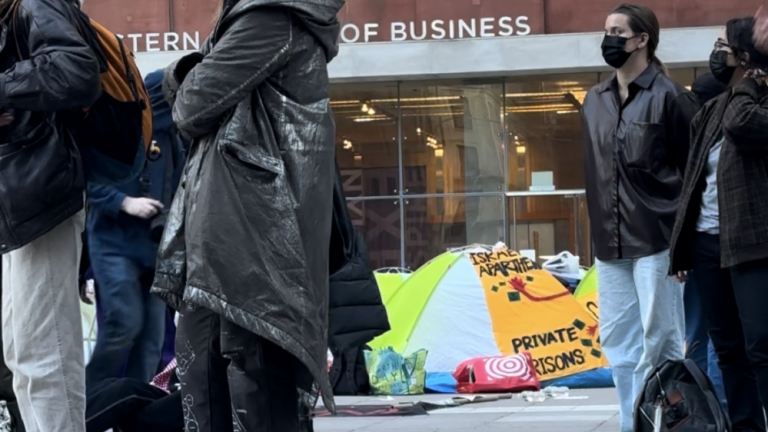
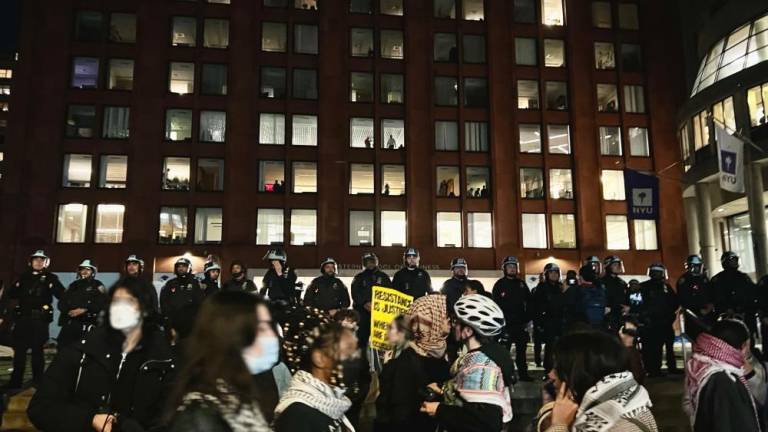
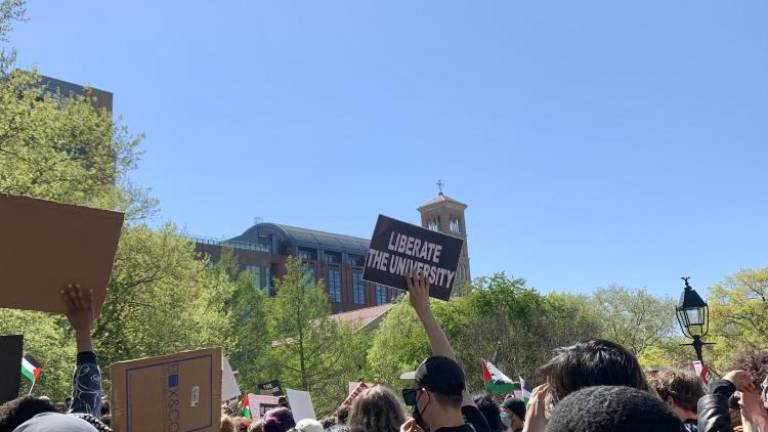
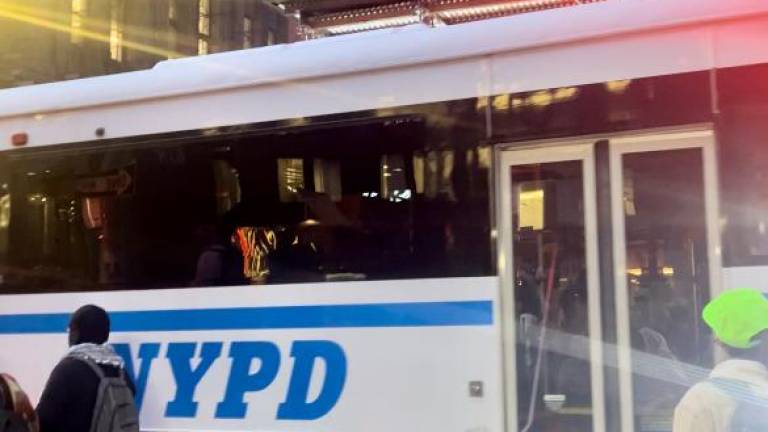
Tensions remain high at New York University.after hundreds of students who had set up a “Gaza Solidarity Encampment” in Gould Plaza, an outdoor area outside the NYU Stern School of Business were forced to disband. Following the in the footsteps of Columbia University, where many pro-Palestine students have occupied University grounds with “Solidarity Encampments” camps, around 50 NYU students and faculty from the NYU “Palestine Solidarity Coalition” set up similar tents on April 22 at around 6 am.
The NYU Palestine Solidarity Coalition comprises students from various groups, including “Jews Against Zionism,” “Faculty for Justice in Palestine,” and “Shut it Down NYU.” These groups have been advocating for NYU to divest its investments from Israel, including its study away campus in Tel Aviv. A small group of pro-Israeli protesters had gathered on the sidewalk, chanting slogans and displaying Israeli flags in opposition to the encampment.
By the afternoon of April 22, the number of pro-Palestine protesters doubled, while NYU’s campus safety positioned barriers outside Gould Plaza to deter further entry. Campus Safety Director Fountain Walker announced that there had been a “breach” of the barriers and warned that if protesters did not disperse by 4 p.m., they would face consequences. The protest, however, continued to swell, with numerous students and non-NYU individuals gathering on the sidewalk. In an effort to demonstrate that there was no breach, protesters held up their campus IDs while continuing to protest. Despite the deadline passing, no action was taken by 4 p.m.
Faculty members who had joined the encampment intervened in multiple instances, linking arms to shield students from the police. By the evening, around 8:15 p.m., a large contingent of NYPD officers in riot gear surrounded Gould Plaza, using megaphones to order protesters to disperse. According to multiple sources, as students moved toward police to protect Muslim protesters who were praying in the plaza, officers began charging at them, making arrests using zip ties.
Mayor Eric Adams in his weekly press conference with reporters on April 23 said police were hit with bottles and one officer hit in the head with a chair was only shielded from injury because he was wearing a riot helmet. “People who peacefully protest for an issue, they’re not throwing bottles and chairs.” Both the NYPD and Adams attributed the unrest to “outside agitators.” Some officers also alleged that that faculty members were the most aggressive toward the police.
Police clad in riot gear forcefully pushed back against the protesters, clearing Gould Plaza of tents and arresting a total of 120 individuals. One hundred sixteen were arrested for trespassing, while four others faced charges of resisting arrest and obstructing governmental administration. Many students were pepper-sprayed and injured during the arrests and two members of the press, including school publication Washington Square News and HellGate, said they were pepper-sprayed by police.
Two hours after the incident, NYU President Linda Mills released a statement describing the protest as “disorderly, disruptive, and antagonizing behavior that interfered with the safety and security of our community,” It further mentioned that “We also learned that there were intimidating chants and several anti-Semitic incidents reported. Given the foregoing and the safety issues raised by the breach, we asked for assistance from the NYPD. The police urged those on the plaza to leave peacefully, but ultimately made a number of arrests.”
By the next morning on April 23, all the protestors were released, but students and faculty members were angry. They organized a strike and town hall, during which hundreds walked out of their classrooms at 1 p.m. to join the NYU Palestine Solidarity Coalition at Washington Square Park. Chants such as “Gaza, Gaza you will rise, the students are by your side” were raised.
Claims and counter claims were still flying even as the crowd at NYU appeared to have dissipated by April 23. The American Association of University Professors (AAUP) Chapter at New York University, issued statements condemning the university for involving law enforcement and pushed back against claims by police and Adams who said non-students had stirred up the crowd. “There was no breach in the barriers by non-NYU ID-holding individuals; there was no intimidation or antisemitism expressed from the Plaza or the assembled NYU-identified protesters on the sidewalk nearest to the barriers; there was no intimidation other than by NYPD towards those on the sidewalk and implicitly on the Plaza (until they moved in, and then the intimidation was extremely violent).”
Other groups, including Jewish Anti-Zionists at NYU, NYU Law Students for Justice in Palestine, NYU Students for Justice, and several others united under the NYU Palestine Solidarity Coalition, issued a statement titled “Response to NYU President Linda [K]ills’ dishonest statement.” In the statement, they claimed they were met with “unprecedented levels of police brutality” during the protest and vowed to continue to persist in demanding boycotts and divestments by NYU in relation to Israel.
Currently, in response to the protests, NYU has constructed a wooden wall around Gould Plaza. Many students argue that this action contradicts NYU’s slogan of a “campus without walls.” The students who organized the encampment also allege that NYU is initiating a “forensic investigation” against them. Unlike many of the pro Palestine protestors at Columbia, no NYU students had been suspended at presstime.